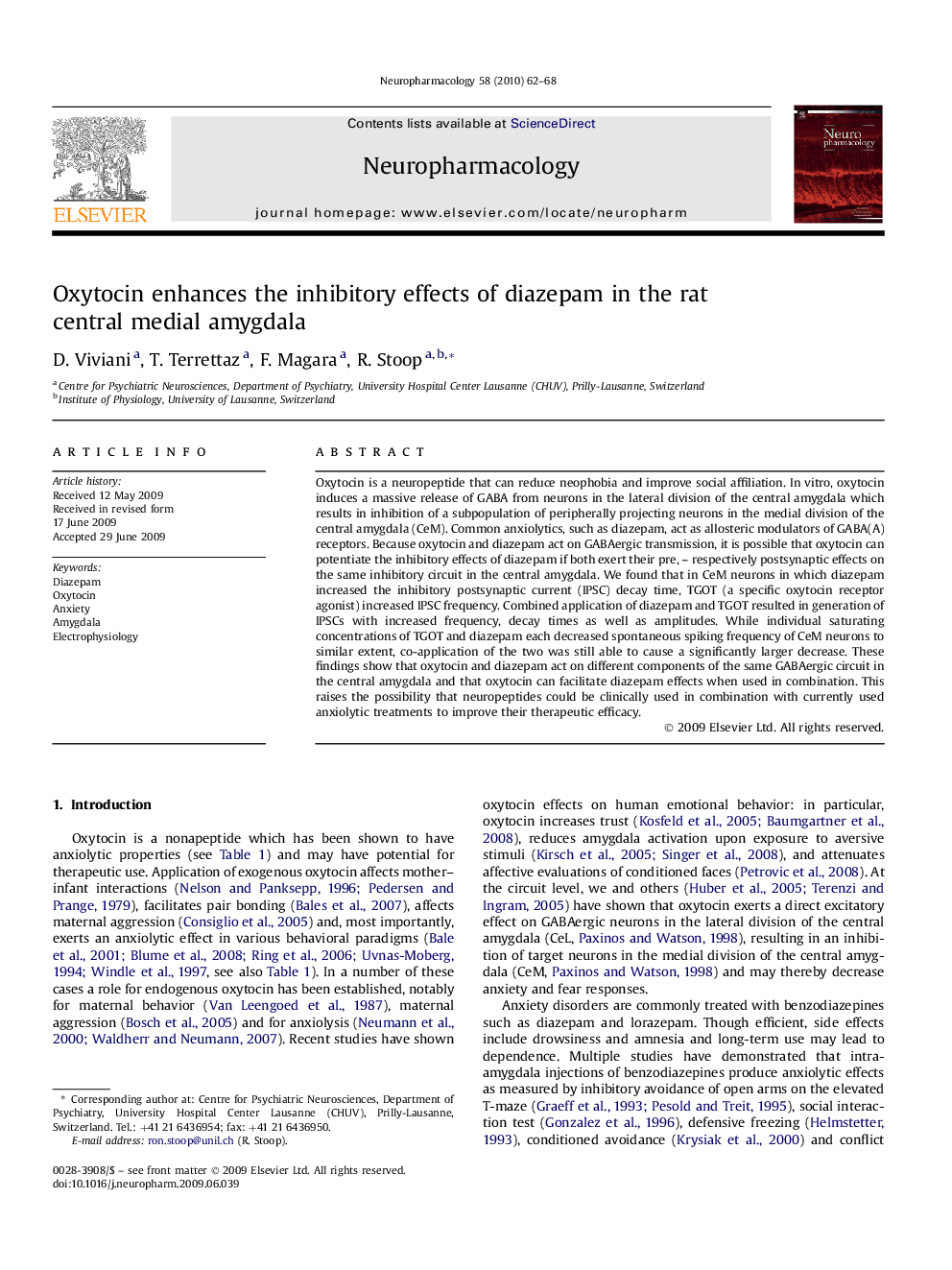| کد مقاله | کد نشریه | سال انتشار | مقاله انگلیسی | نسخه تمام متن |
|---|---|---|---|---|
| 2494171 | 1115549 | 2010 | 7 صفحه PDF | دانلود رایگان |

Oxytocin is a neuropeptide that can reduce neophobia and improve social affiliation. In vitro, oxytocin induces a massive release of GABA from neurons in the lateral division of the central amygdala which results in inhibition of a subpopulation of peripherally projecting neurons in the medial division of the central amygdala (CeM). Common anxiolytics, such as diazepam, act as allosteric modulators of GABA(A) receptors. Because oxytocin and diazepam act on GABAergic transmission, it is possible that oxytocin can potentiate the inhibitory effects of diazepam if both exert their pre, – respectively postsynaptic effects on the same inhibitory circuit in the central amygdala. We found that in CeM neurons in which diazepam increased the inhibitory postsynaptic current (IPSC) decay time, TGOT (a specific oxytocin receptor agonist) increased IPSC frequency. Combined application of diazepam and TGOT resulted in generation of IPSCs with increased frequency, decay times as well as amplitudes. While individual saturating concentrations of TGOT and diazepam each decreased spontaneous spiking frequency of CeM neurons to similar extent, co-application of the two was still able to cause a significantly larger decrease. These findings show that oxytocin and diazepam act on different components of the same GABAergic circuit in the central amygdala and that oxytocin can facilitate diazepam effects when used in combination. This raises the possibility that neuropeptides could be clinically used in combination with currently used anxiolytic treatments to improve their therapeutic efficacy.
Journal: Neuropharmacology - Volume 58, Issue 1, January 2010, Pages 62–68